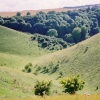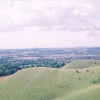Please login or click here to join.
Forgot Password? Click Here to reset pasword
 |  |  |  |  |  |
| Vince Hawthorn Posts: 12758 Joined: 19th Apr 2010 Location: UK | quotePosted at 22:29 on 4th February 2013 OK , we all enjoy using our digital cameras with all their tricks and gizzmos built in, one bit of the kit I still have not worked out is (a) how the image stabilisation actually works and (b) why does it have to be turned off when a tripod is used- answers on a postcard please. |
| Dave John Posts: 22335 Joined: 27th Feb 2011 Location: England | quotePosted at 22:55 on 4th February 2013 As far as I can say the way I understand it is that when the stabilisation is 'active' the camera is expecting an element of movement and as such makes certain compensations. So when the camera is on a tripod ( an item I have 2 really superb examples but very rarely use!!) with stabilisation active it is still anticipating movement and therefore feels it should introduce some compenstion.......don't fully understand it, but that is the way I understand it to be. So when it is turned off, which mine is the majority of the time, you are playing with the bog standard camera you were used to before all this technology.....otherwise known as progress Sorry, couldn't afford the cost of a postcard and stamp........ |
| Edward Lever Posts: 734 Joined: 22nd Dec 2005 Location: UK | quotePosted at 23:16 on 4th February 2013 Image stabilisation may be done either within the lens or in the camera body, depending on the manufacturer. In both cases, the image stabiliser relies on a mini-gyroscope to provide a stable spatial reference, with a feedback mechanism either within the lens or on the sensor mount to cancel out random movements. Using a tripod with the image stabiliser switched on may cause the feedback system to 'hunt'. In other words, with IS on, the system is expecting movement, as Dave John rightly states. |
| Dave John Posts: 22335 Joined: 27th Feb 2011 Location: England | quotePosted at 23:22 on 4th February 2013 Thanks for the confirmation Edward and a bit more of a technical view.... |
| Vince Hawthorn Posts: 12758 Joined: 19th Apr 2010 Location: UK | quotePosted at 23:41 on 4th February 2013 Yes Gentlemen, thank you for your explanations, it is hard enough to grasp all these technicalites let alone how the boffins actually originally work it out in the first place and put it together. |
| Paul Hilton Posts: 2605 Joined: 21st Nov 2004 Location: UK | quotePosted at 00:14 on 5th February 2013 I'd agree with the above thay with lens stabilisation, if it's fixed on a tripod, the moving lens elements are anticipating and looking for movement that's not there, thus making the images a bit less sharp than they otherwise would be with it turned off. More recent systems, like Nikon's VR II lenses are getting very sophisticated with switching options on how it works and they claim their system gives an additional 5 stops you can hand hold at lower shutter speeds. 1/8th of a sec at 200mm hand held is easily achievable with the 70-200 f2.8 VR II lens. Edited by: Paul Hilton at:5th February 2013 00:15 |
| Edward Lever Posts: 734 Joined: 22nd Dec 2005 Location: UK | quotePosted at 07:30 on 5th February 2013 It is worth mentioning that although Image Stabilisation can give up to 5 stops improvement in exposure, a fast shutter speed (eg 1/1000 of a second) is still needed to get sharp action shots, even with IS on. Fast (and very expensive) telephoto lenses are therefore still necessary for sports photography. Image Stabilisation really comes into its own when shooting static scenes such as the interiors of old buildings or telephoto landscape shots. |
Philip Cross Posts: 17 Joined: 23rd Jun 2013 Location: England | quotePosted at 16:31 on 24th June 2013 If you are using a tripod too. To really get a tac sharp image. If you are using a digital slr. Use the mirror lock up feature. And use a remote shutter trigger. If you dont have one. Setting the self timer works just as well. |
| Vince Hawthorn Posts: 12758 Joined: 19th Apr 2010 Location: UK | quotePosted at 21:43 on 24th June 2013 Hi Phil and yes I agree with you, have been doing a bit of reading up since this thread started. For all the discussion though one does tend to grab the camera and go with the tri-pod left behind, however since fathers day I have a mono-pod to try out- the extra mobility should encourage more use. Time will tell. Thanks for the input Phil. |
| Dave John Posts: 22335 Joined: 27th Feb 2011 Location: England | quotePosted at 21:48 on 24th June 2013 You should certainly find you shots from the long end of th telephoto should be sharper. Did you also get a head with the monopod to allow portrait format shooting?? |